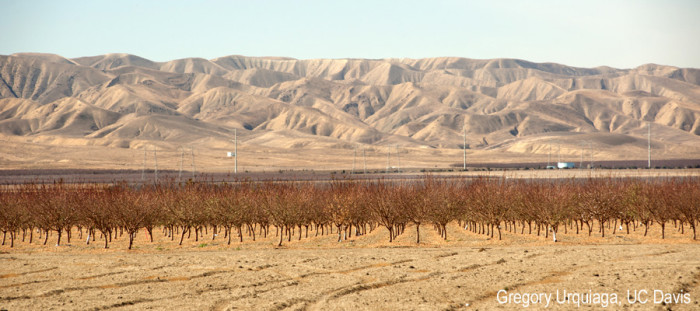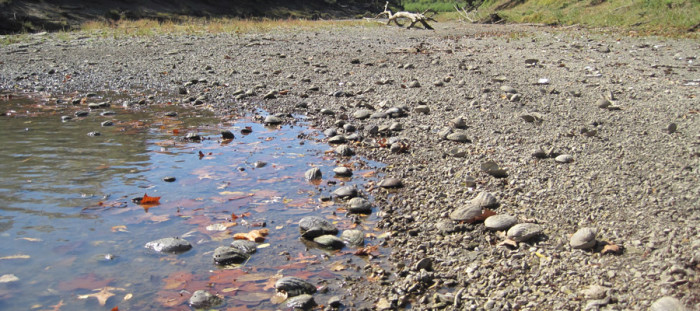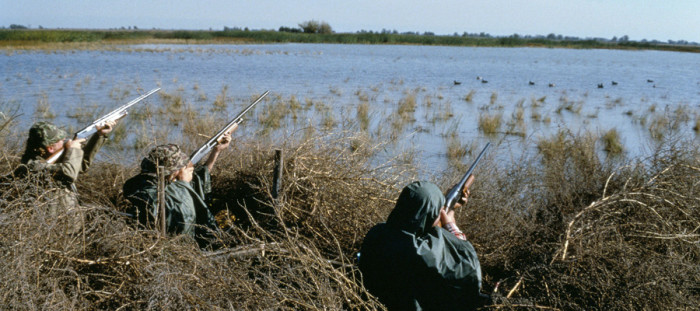Our previous post regarding how the true value of land can be enhanced by improving water resources simply states that “although there is plenty of water on Earth, it is not always in the right place, at the right time and of adequate quality.” Water use and allocation is a controversial topic, and here in the US we are beginning to see the impacts that climate change is already having on biodiversity, field sports, outdoor recreation and agricultural production in water stressed regions. One such example is California, where improvements in irrigation technology and a sense of hardy determination as well as an unusual wet-spell during initial land use decisions have created a hub of agricultural production despite the natural limitations of water availability.
California depends on good winters to provide snowpack in the mountains that will feed rivers and groundwater sources for the remainder of the year. In 2012, California was the top producing state in the United States with the agriculture industry, bringing in $44.7 billion, predictions of 15% less precipitation on average pose a huge threat to the future of the industry.[1] But a decrease in snowfall has contributed to drought conditions and in early 2014; Governor Jerry Brown declared a state of emergency as they entered their third straight dry year.[2]
This impending crisis is a practical example of a lack of foresight in land planning and land use, and while the agricultural industry will suffer, the consequences do not end there. Scarcity of water will lead to lower crop production, leading to decreased supply of popular produce and an increase in price which will make basic fresh foods out of reach for many US families. Tourism is suffering as well as those employed in the outdoor recreation; whitewater rafting has suffered due to low water levels, a father’s day fishing tournament was moved because the lake was too shallow for the boats, and state officials have prohibited sport fishing along sections of 20 rivers with more closures expected this fall.[3]
Species other than us are already paying the price for California’s water use patterns, including species typically involved in outdoor recreation and field sports. The waterfowl breeding population was down by 15% in 2013 and the deer population dwindling to less than 500,000 (a rapid decrease from the 2 million that existed in 1960’s) from migration and an increase in disease due to crowded conditions in remaining habitat.[4] Raptors are having one of the worst breeding seasons on record courtesy of habitat shifts that have reduced their available prey.[5] Also impacted are the fish, especially salmon and those employed by the industry that generates $1 billion worth of economic activity. Migratory routes for the endangered Coho salmon are drying up, and a drop in numbers has led to a bar on salmon fishing with only a few hatchery exceptions.[6] In early June, millions of rainbow and steelhead trout were evacuated from the Nimbus and American River Hatcheries, some of the most productive in California, because the water was expected to reach lethal temperatures of 78˚, up from the average 65˚.[7]
Other areas in the United States have less-stressed water resources, and could be better locations to grow the crops that California has become known for such as produce and nuts. The orchard crops will suffer the most during future droughts, because unlike broccoli fields they require water and cannot be left fallow during years of extreme shortages. However, this prediction has not slowed the growth of nut orchards in the state. Fueled by China’s demand, the area of pistachio cultivation almost doubled between 2006 and 2011 while the area devoted to almond orchards increased by over 10%.[8]
While it remains to be seen how California will adapt to shifts in climate ranges that feed their economic activity, and how much biodiversity will be lost, it provides a valuable example of how critical thoughtful and comprehensive land use will only continue to become more important to protect economic and natural resources. To learn more about how your property’s potential can be maximized using existing natural resources and ecosystem services, please contact us at rmckee@fieldsport.com.
This piece written by Field Sport Concepts, Ltd. staff member Macy Anne Carman.
[1] http://www.cdfa.ca.gov/statistics/pdfs/2013/AgStatsOverview.pdf
[2] http://www.acwa.com/content/2014-drought-watch
[3] http://www.latimes.com/business/la-fi-drought-tourism-20140617-story.html
[4] http://climate-connections.org/2014/02/20/drought-threatens-california-wildlife/
[5] http://thinkprogress.org/climate/2014/06/06/3445705/california-drought-raptors/
[6] http://climate-connections.org/2014/02/20/drought-threatens-california-wildlife/
[7] http://news.yahoo.com/california-drought-forces-evacuation-trout-hatcheries-192904785.html
[8] http://www.acpistachios.org/pdf/2011Statistics.pdf, http://www.nass.usda.gov/Statistics_by_State/California/Publications/Fruits_and_Nuts/201305almac.pdf



